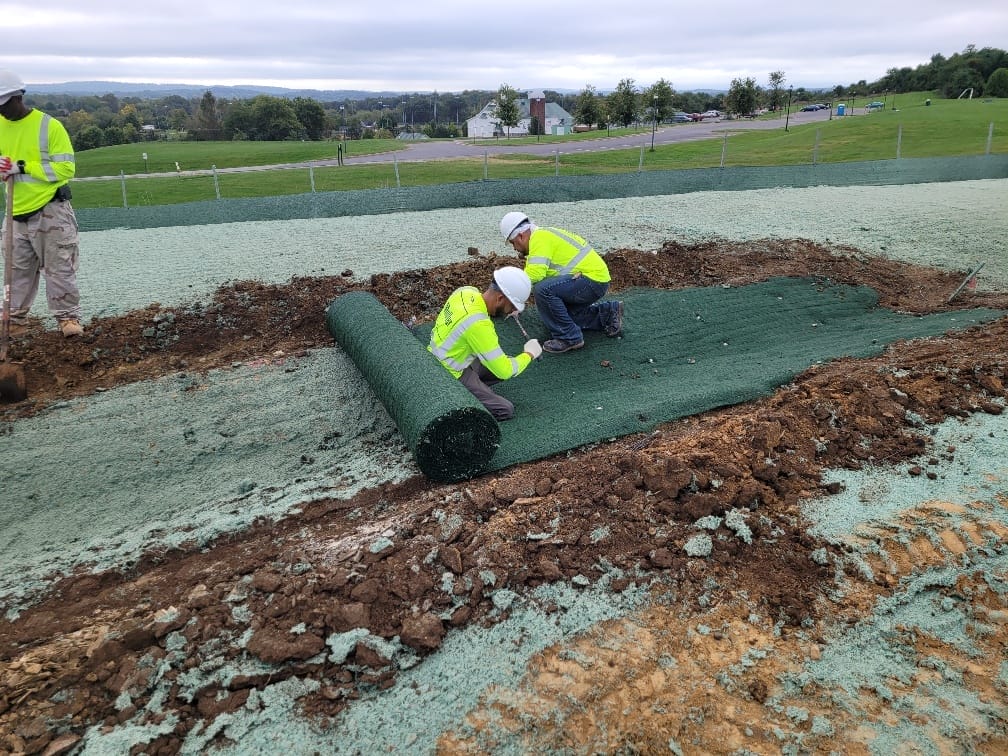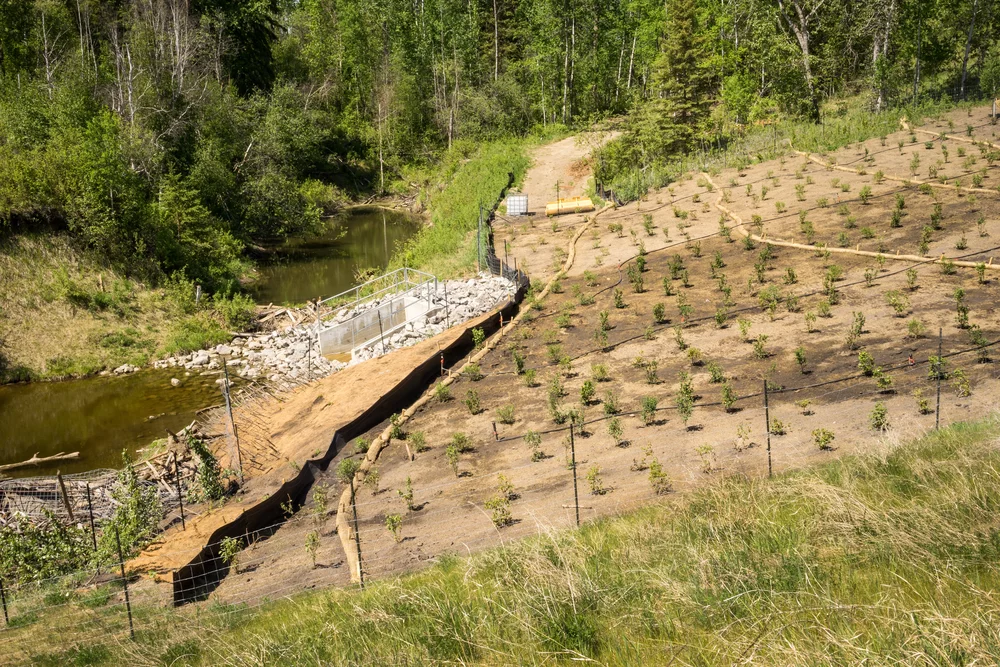Reliable Erosion Control Techniques for Lasting Land Administration
Are you looking for means to effectively handle erosion on your land? Discover the various kinds of erosion and their influence on your land, as well as all-natural methods to regulate erosion. Learn exactly how to execute effective disintegration control steps and ensure correct surveillance and maintenance.
Significance of Erosion Control in Lasting Land Monitoring
Since it aids stop dirt degradation and loss,Erosion control is necessary for sustainable land administration. By executing effective erosion control methods, you can make sure the long-term health and wellness and productivity of your land. Without appropriate disintegration control measures, dirt disintegration can occur, causing the loss of valuable topsoil that is rich in nutrients essential for plant growth.
Because it assists to maintain soil fertility,One of the primary factors disintegration control is important is. When soil deteriorates, it eliminates the organic matter and nutrients that plants need to prosper. This can lead to lowered plant returns and lowered productivity of the land. Furthermore, disintegration can bring about sedimentation in nearby water bodies, which can adversely influence aquatic communities.
Another key benefit of erosion control is the prevention of land deterioration. By carrying out erosion control techniques such as terracing, shape plowing, and the usage of cover crops, you can help avoid land degradation and keep the health and wellness of your land.

Sorts Of Disintegration and Their Influence On Land
Comprehending the numerous kinds of disintegration and just how they influence the land can help you execute far better land monitoring practices. Erosion is the process through which dirt, rocks, and various other materials are slowly put on away and delivered by natural pressures such as wind, ice, and water. There are four main kinds of disintegration: sheet erosion, rill erosion, gully disintegration, and mass motion disintegration.
Sheet erosion occurs when a thin layer of soil is removed evenly from the surface area of the land. Rill erosion, on the other hand, happens when small channels or rivulets are created on the land due to the circulation of water.
Gully erosion is extra serious and takes place when larger channels or gullies are created because of the continual circulation of water. This kind of disintegration can cause substantial damage to the land, causing loss of topsoil and greenery. Last but not least, mass movement erosion describes the activity of large amounts of dirt and rocks downhill as a result of the force of gravity. This can occur in the kind of landslides or slumping.
Comprehending these various kinds of erosion and their influence on the land is vital for reliable land management. By executing erosion control methods such as terracing, contour plowing, and reforestation, you can lessen disintegration and protect the stability of the land. Furthermore, exercising great land monitoring approaches like proper plant rotation, maintaining ground cover, and utilizing sediment control measures can better aid in preventing disintegration.
Natural Erosion Control Methods for Lasting Land Monitoring
By implementing natural erosion control approaches, you can successfully protect the stability and manage of your land. One effective approach is making use of plants, such as lawns and plants, to support soil and protect against disintegration. Growing indigenous varieties can assist raise root density and bind the soil together, minimizing the risk of erosion created by heavy rains or wind (hydroseeding). In addition, mulching is another natural strategy that can assist manage disintegration. By using a layer of natural compost, such as wood chips or straw, you can secure the soil from company website the effect of raindrops, decreasing dirt compaction and overflow. An additional natural erosion control method is contouring the land. By developing shape lines or terraces on inclines, you can reduce the circulation of water and allow it to pass through the soil, minimizing erosion. In areas where disintegration is a significant concern, setting up erosion control coverings or mats can be advantageous. These floor coverings are made of naturally degradable products and aid maintain the soil up until greenery is developed. On the whole, by making use of these all-natural disintegration control methods, you can effectively take care of and shield your land from disintegration, guaranteeing its long-term sustainability.
Carrying Out Reliable Disintegration Control Procedures

One such method is the usage of erosion control blankets. In addition, growing greenery is a vital step in disintegration control. By applying these confirmed erosion control approaches, you can efficiently protect your land and minimize the risk of erosion and its detrimental impacts.
Surveillance and Maintenance of Disintegration Control Techniques
When tracking and maintaining disintegration control measures, it is necessary to on a regular basis inspect the disintegration control blankets, terraces, plant life, and debris control procedures to guarantee they are functioning appropriately and successfully stopping disintegration (Memphis Erosion Control Solutions erosion control). By carrying out normal examinations, you can determine any type of concerns or shortages in the disintegration control strategies and take necessary actions to remedy them
Begin by inspecting the erosion control coverings. Look for signs of damages or wear, such as tears or revealed click reference dirt.
Inspect for indicators of disintegration, such as debris accumulation or uneven surface areas. Guarantee that the terraces are correctly designed and kept to divert water flow and lower erosion.
Assess the vegetation in the erosion control area. Ensure that it is healthy and balanced and appropriately covers the dirt. Look for any indicators of plant tension or disease, and address them immediately. Proper plant life protection aids stop and stabilize the dirt disintegration.
Finally, examine the sediment control procedures, such as debris basins or sediment fences. See to it they are correctly mounted and working as intended. Remove any type of built up debris and guarantee that the controls are effectively maintained.
Routine monitoring and maintenance of disintegration control procedures are critical for their lasting performance in avoiding disintegration and maintaining sustainable land monitoring techniques.
Conclusion
In verdict, you should prioritize erosion control for sustainable land management. By recognizing the various kinds of disintegration and their impact on the land, you can apply efficient natural disintegration control approaches.
Discover the different kinds of erosion and their effect on your land, as well as natural approaches to regulate disintegration. There are 4 primary types of disintegration: sheet disintegration, rill erosion, my latest blog post gully disintegration, and mass movement disintegration.
By applying erosion control strategies such as terracing, shape plowing, and reforestation, you can minimize disintegration and preserve the honesty of the land (Memphis Erosion Control Solutions excavation). Generally, by making use of these all-natural disintegration control methods, you can successfully handle and shield your land from disintegration, guaranteeing its lasting sustainability
By comprehending the various kinds of disintegration and their effect on the land, you can execute efficient all-natural erosion control approaches.